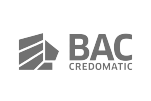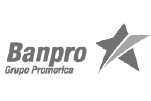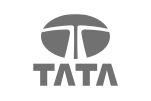- Home
- Certifications
- Certified Business Agility Professional

Objective
The Certified Business Agility Professional certification is intended to certify that the candidate has the knowledge and skills necessary to develop a Business Agility mindset in any type of organization.
This certification has been developed based on the model proposed by the Business Agility Institute, based on the research of the working groups that work in the different defined domains.
(Evan Leybourn, CEO and Co-Founder of the Business Agility Institute, introduction of the Certified Business Agility Professional certification).
IMPORTANT: BAI does not endorse any certification program for its Business Agility model, so our certification is not endorsed by BAI either, although BAI is aware of its existence.
Business Agility is the ability of an organization to achieve and maintain its full potential, both in terms of its profits and its team (people), regardless of changes in its internal or external context.
Developing the right mindset in the organization, as a culture intrinsic to it, is essential for a flexible and adaptive organization.
Aimed at
This certification is aimed at all professionals interested in acquiring or deepening their knowledge in Business Agility:
- Senior managers, business managers, commercial managers and agents responsible for business agility and decision making in an organization.
- Scrum Master, project managers who have the context of agility and are looking to deepen their knowledge at a managerial level.
- Any professional seeking to acquire the necessary skills to assess, propose and enable business agility, in any type of industry and size of organization.
Main Subjects
Introduction to Business Agility
13%- What is Business Agility
- VUCA World
- Customer Centric
- Business Agility Manifesto
- Approaches to Business Agility
- Business Agility Institute model
The customer
7%- Introduction to the domain
- Understanding the customer
- The customer as a purpose
- Build trust
- Practices, methods, and frameworks
Relationships: Workforce
7%- Introduction to the domain
- Psychological Safety
- Incentive scheme
- Talent attraction and development
- Practices, methods, and frameworks
Relationships: The board of directors
7%- Introduction to the domain
- Adaptive governance (agile)
- Represent the customer
- Metrics and information transparency
- Practices, methods, and frameworks
Relationships: External Partners
7%- Introduction to the domain
- Agility in acquisitions
- Create the ecosystem
- Practices, methods, and frameworks
Leadership: People Management
7%- Introduction to the domain
- Developing an agile mindset
- Build empathy
- Delegate outcomes
- Practices, methods, and frameworks
Leadership: One team
7%- Introduction to the domain
- Communicate the greater purpose
- Social contract of the team
- Get commitment
- Practices, methods, and frameworks
Leadership: Strategic Agility
7%- Introduction to the domain
- Market-making innovation
- Create a viable strategy
- Practices, methods, and frameworks
Individuals: Growth Mindset
7%- Introduction to the domain
- Say “I don’t know”
- Celebrate failure and learning
- Shorten feedback loops
- Practices, methods, and frameworks
Individuals: Craft Excellence
7%- Introduction to the domain
- Improve quality with agile practices
- Technical excellence
- Practices, methods, and frameworks
Individuals: Ownership & Accountability
3%- Introduction to the domain
- Authority and autonomy
- Team aligned to results (outcomes)
- Practices, methods, and frameworks
Operations: Structural Agility
6%- Introduction to the domain
- Create value delivery teams
- Maintain the continuity of ownership
- Create stable teams
- Practices, methods, and frameworks
Operations: Process agility
6%- Introduction to the domain
- Understand existing processes
- Continuous adaptation of processes
- Practices, methods, and frameworks
Operations: Enterprise agility
6%- Introduction to the domain
- Towards an adaptive organization
- Financing outcomes or teams
- Practices, methods, and frameworks
The journey
3%- Purpose of the BAI model
- Recommendations when applying the model
- Systemic intervention
- Practices, methods, and frameworks
Details
Duration:
60 minutes Number of questions:
30 (Multiple Choice) Minimum passing score:
65% Open book:
No Electronic equipment allowed:
No Level:
Intermediate Available languages:
English, Spanish Pre Requirements:
No Types of supervision available:
Live Proctoring
Believe Proctoring ₂O Second chance (free of charge):
Yes Minimum passing score ₂O Second chance:
75%
Available in Self-study
Yes




























